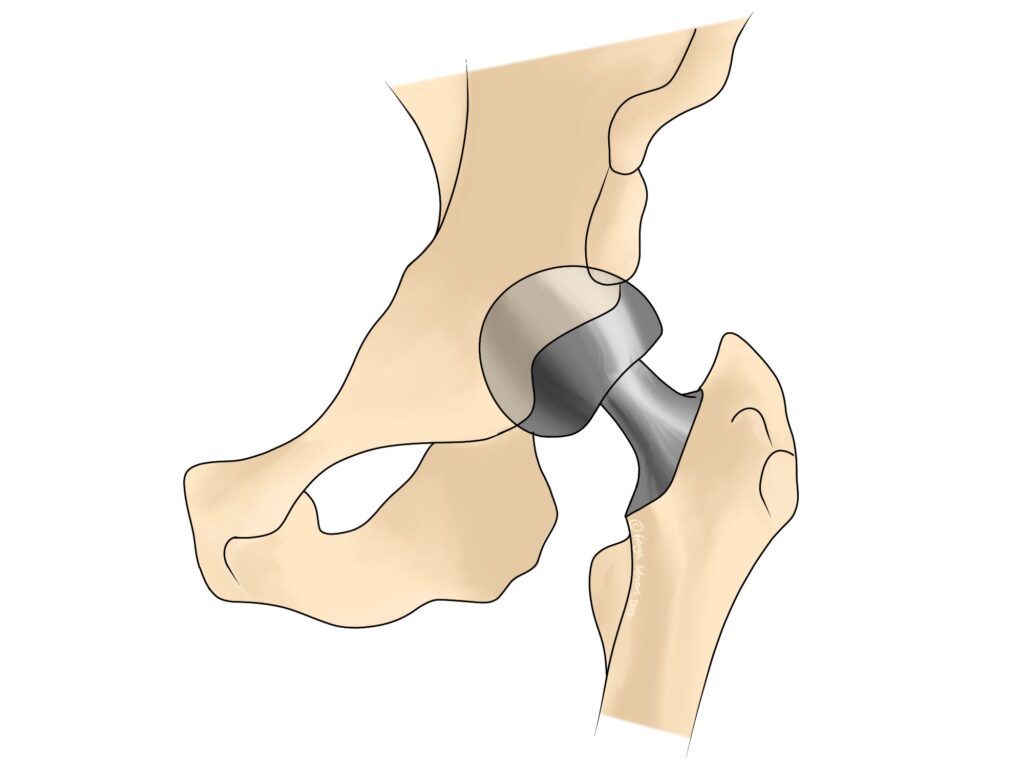In some cases, joint replacements are unavoidable. For these patients, osteopathic treatment before and after can help to prepare and rehabilitate the area. In other cases, the conditions leading to the replacement may be responsive to treatment, delaying the need for surgery.
Although caring for your joints may require daily exercise, and maybe even some lifestyle changes, don’t make the mistake of thinking that a joint replacement is the easy solution. Joint replacement surgery is major, and the rehabilitation required is typically more uncomfortable than the daily preventative exercises and treatment your osteopath would provide!

Arthritis
Osteoarthritis is a common cause for joint replacement surgery. But when identified and treated early enough, surgery may be avoided.
Arthritis is a condition of the cartilage surface that covers the surfaces of a joint. In the early stages, the degeneration is isolated to the cartilage itself. Because cartilage has a poor blood supply, it relies on movement and the fluid within a joint to exchange its waste products for nutrients. Disruption to joint movement can lead to a decline in cartilage health.
At this point, changes may be asymptomatic. As they progress, the body might adapt to keep you comfortable, allowing the condition to develop under the radar. The first sign might be a comment from a friend that you’re moving differently, rather than any pain. At this point, come and see your osteopath, as restoring the movement and encouraging fluid exchange is likely still easily done.
Later stage arthritis can impact the bone beneath the cartilage. This is harder to manage, as some of the cartilage will have degraded beyond repair. The underlying bone may become rough too, making the joint more uncomfortable and restricting movement further. At this point, a joint replacement might be the most effective treatment route.
Prehab and Rehab
When surgery is required, we can support you before and after. You’ve probably heard of rehabilitation, but have you heard of prehabilitation? Treating the body to prepare it for surgery can make you more comfortable in the run-up to your operation, and may make recovery a little easier too.
The hospital should provide a rehabilitation plan, but sometimes these can be lacking. Your osteopath can help you to regain movement during the healing process, so don’t feel you have to wait 6 weeks before seeking help. As tissues heal, the demands put on them (through rehab and daily life) encourage them to heal correctly. It’s the same idea as gently reintroducing weight bearing to a sprained ankle to encourage the tendon fibres to knit together effectively.
Treatment before or after surgery may entail:
- mobilising the joint
- releasing the muscles around it that may be holding it in a restricted range
- treating joints and muscles further away from the area to limit compensation
Sometimes the effects of an arthritic joint can be wide reaching, so don’t be surprised if your appointment for your knee pain leads to treatment in your back or beyond.
Click here to book an appointment with Beverley for your joint pain
